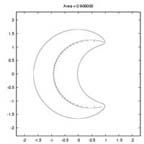Artem Abanov (Texas A&M University)
Oded Agam (The Hebrew University of Jerusalem)
Yacin Ameur (KTH)
Ferenc Balogh (Concordia University)
Dmitri Beliaev (Princeton University)
Marco Bertola (Concordia University)
Lennart Carleson (KTH)
Darren Crowdy (Imperial College London)
Ilya Gruzberg (University of Chicago)
Bjorn Gustafson (KTH)
John Harnad (CRM; Concordia University)
Haakan Hedenmalm (KTH)
Sam D. Howison (University of Oxford)
Dmitry Khavinson (University of South Florida)
Dmitry Korotkin (Concordia University)
Gregory Lawler (University of Chicago)
Seung-Yeop Lee (CRM, Université de Montréal)
Lionel Levine (UC Berkeley)
Leonid Levitov (Massachusetts Institute of Technology)
Irina Markina (Universitetet i Bergen)
Kenneth McLaughlin (University of Arizona)
Mark Mineev-Weinstein (Center for Nonlinear Studies, Los Alamos National Laboratory)
Aleksander Yu. Orlov (Institute for Oceanology, Moscow)
Yuval Peres (UC Berkeley)
Aleix Prats Ferrer (Université de Montréal)
Mihai Puttinar (University of California at Santa Barbara)
Steffen Rohde (University of Washington)
Edward Saff (Vanderbilt University)
Yvan Saint-Aubin (Université de Montréal)
Misha Sodin (Tel Aviv University)
Kanehisa Takasaki (Kyoto University)
Takashi Takebe (Ochanomizu University)
Razvan Teodorescu (Los Alamos National Laboratory)
Alexander Vasil'iev (Universitetet i Bergen)
Anton Zabrodin (Institute of Biochemical Physics)
Michel Zinsmeister (Université d’Orléans)
Scientific Organizers
- N. Makarov (Caltech)
- P. Wiegmann (Chicago)

The zeroes (crosses) of the orthogonal polynomials - up to degree 54 - in the plane for a measure with a repulsive charge at z=1. The bean-shaped region is the support of the asymptotic equilibrium distribution and the line extending between the two apices is the skeleton (mother-body) of the domain. The gro wth of this region follows the Laplacian-growth evolution, the area increasing linearly in time.
